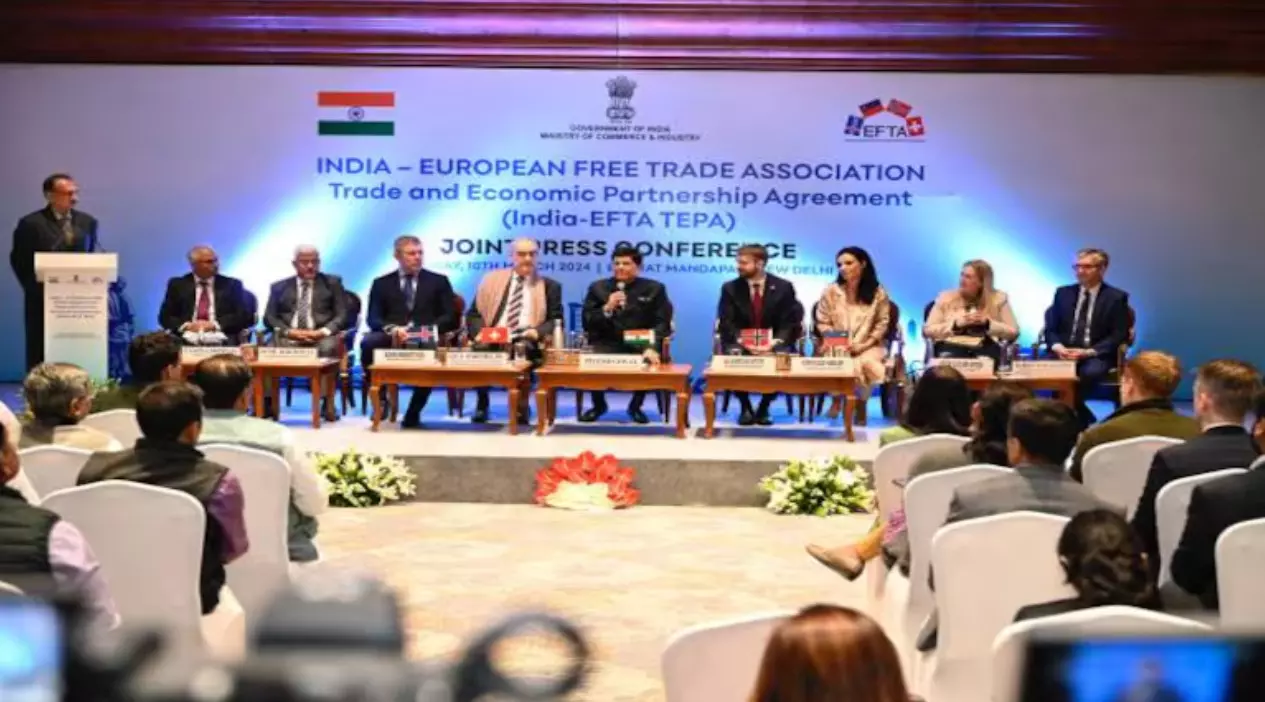A Promising Template?

India’s free trade pact with the European Free Trade Association (EFTA), which includes Switzerland, Norway, Iceland, and Liechtenstein, will officially come into effect on October 1. Signed after nearly 16 years of negotiations, the Trade and Economic Partnership Agreement (TEPA) is indeed a landmark deal. For the first time, a trade agreement signed by India includes a formal investment commitment of USD 100 billion over 15 years alongside a pledge to help create one million direct jobs. This is no small achievement. India has managed to secure what is known in legal terms as an ‘obligation of conduct’, meaning EFTA countries are bound to make genuine efforts to fulfill their promises of investment and job creation, even if the results may not be legally enforceable. This could potentially set a strong precedent and show how India’s trade negotiators are becoming more ambitious in shaping future-oriented deals.
But while the numbers are impressive, it’s too early to call this a model for future free trade agreements. India’s recent FTAs — with countries like Australia, the UAE, and Mauritius — have taken a very different approach altogether. Those deals focused mainly on trade in goods and services, with investment treated separately. The India-EFTA agreement stands out because it brings trade and investment back under one roof, something India used to do in its older FTAs with countries like Japan and South Korea. So, is India returning to its earlier model of combining trade and investment in a single agreement? Or is this just a one-off? That remains to be seen. What is clear, however, is that India needs a more consistent FTA policy, especially at a time when talks with key partners like the UK and the EU have slowed down.
On the trade front, India has agreed to lower or remove duties on 82.7 per cent of its tariff lines, covering 95 per cent of EFTA’s exports. For Indian consumers, this could mean cheaper access to high-end Swiss products like watches, chocolates, and biscuits. But, at the same time, it also means increased competition for Indian producers, especially in non-essential or luxury goods. Over 80 per cent of EFTA’s exports to India are gold — which will now come in at lower tariffs — possibly helping India’s jewellery sector, but doing little to boost broader industrial growth. The services sector, in contrast, offers more promise. India has opened up 105 service sub-sectors to EFTA countries and, in return, gained access to even more from each of the four nations. Indian professionals in IT, legal, R&D, and healthcare services are most likely to benefit from this wider access. In addition, with Switzerland acting as a gateway to the larger European Union (over 40 per cent of Swiss services exports go to the EU), Indian companies now have a stronger base to expand their presence in Europe. Still, trade volumes between India and three of the four EFTA countries remain low. Switzerland is by far the largest partner. So while the deal opens up opportunities, its real impact will depend on how effectively the promised investment and job creation targets are met. The deal also comes at a time when India’s FDI inflows have shown signs of slowing. Embedding an investment roadmap in the FTA could help restore investor confidence — but only if it's backed by a strong implementation framework.
Ultimately, the India-EFTA agreement is a welcome move and a clear sign of growing confidence in India’s economic potential. It has introduced new elements — such as targeted job creation and a long-term investment goal — that can enrich future FTA templates. But for it to become a true game-changer, India must turn these one-time wins into consistent trade policy strategies.



